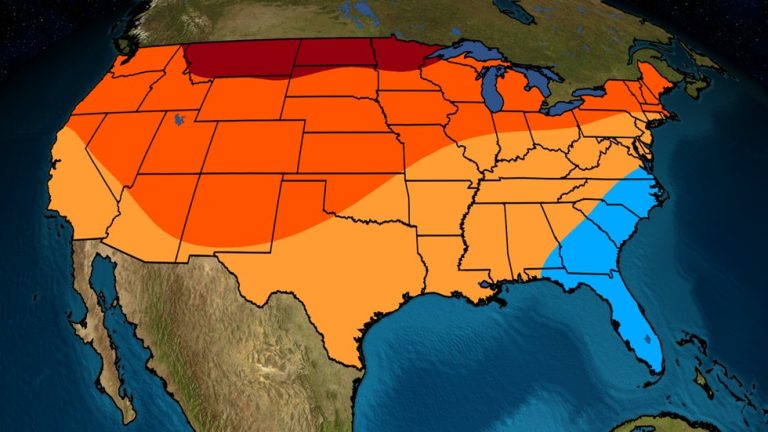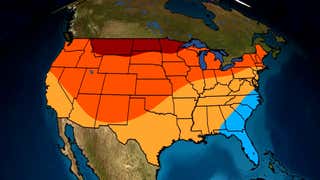

- The February forecast still reflects El Niño conditions, but there is a possibility that the weather will get colder.
- El Niño will fade during the spring months.
- That could mean that many parts of the Lower 48 will see warmer than average temperatures in the new season.
The transition of winter to early spring can be characterized by warmer than average temperatures across the United States as El Niño gradually approaches its demise.
Here's the big picture of what to expect from February to April: Above average temperatures are likely from the Northwest into the Rocky Mountains, the northern and central Plains, the upper Midwest and New England. Parts of the South and Mid-Atlantic may see near-average temperatures.
But, this is the overall snapshot of the three months as a whole. The following monthly forecasts below reveal a warmer trend for many during the spring.
(15-Minute Details: For a more detailed tracking of weather data in your area, view your 15-minute forecast details in our Premium Pro experience.)
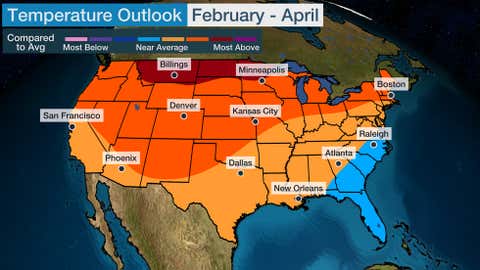

February-April temperature forecast
February still bears the imprint of El Niño, but there's a colder threat: The mid-January Arctic outbreak deviated from the milder-than-average temperatures that El Niño typically brings to the Northwest and Midwest, but the latest forecasts for February show that kind of pattern may be present through the last full month of winter. Likewise, the somewhat below-average temperatures expected in the South next month are also typical of an El Niño winter.
There is a possibility that February will be colder than current forecasts show. One reason is that mid-January cold snaps like the ones the Lower 48 experienced this year are often followed by cooler February months, according to Todd Crawford, vice president of meteorology at Atmospheric G2 and author of the forecast. So, this will be one of the things to watch in the forecast model guidance as we head into February.
(192 Hours: Boost your forecast even further with our detailed hour-by-hour breakdown for the next eight days – only available on our website Premium Pro experience.)


Temperature forecast for February
A fading El Niño could mean a warming trend heading into spring: The strong El Niño phenomenon has peaked and will begin to fade as we head into the upcoming spring months. This shift, which could move toward La Niña conditions sometime this summer, could have some warming impact on what to expect this spring.
The end result is that warmer than average temperatures are favored in many parts of the Lower 48 the closer we get to spring, especially towards April as shown in the second map below.
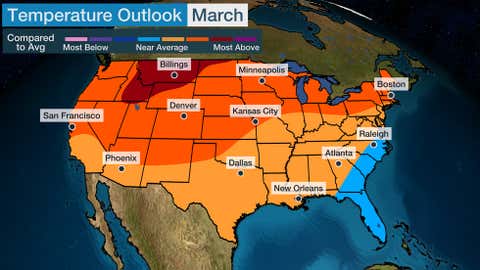

Temperature forecast for March
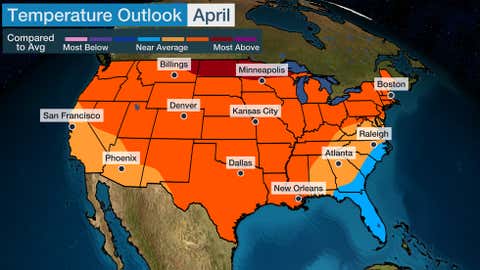

Temperature forecast for April
Chris Dolce He has been a senior meteorologist at Weather.com for over 10 years after starting his career with The Weather Channel in the early 2000s.
The Weather Company's primary journalistic mission is to report on breaking weather news, the environment, and the importance of science in our lives. This story does not necessarily represent the position of our parent company, IBM.

